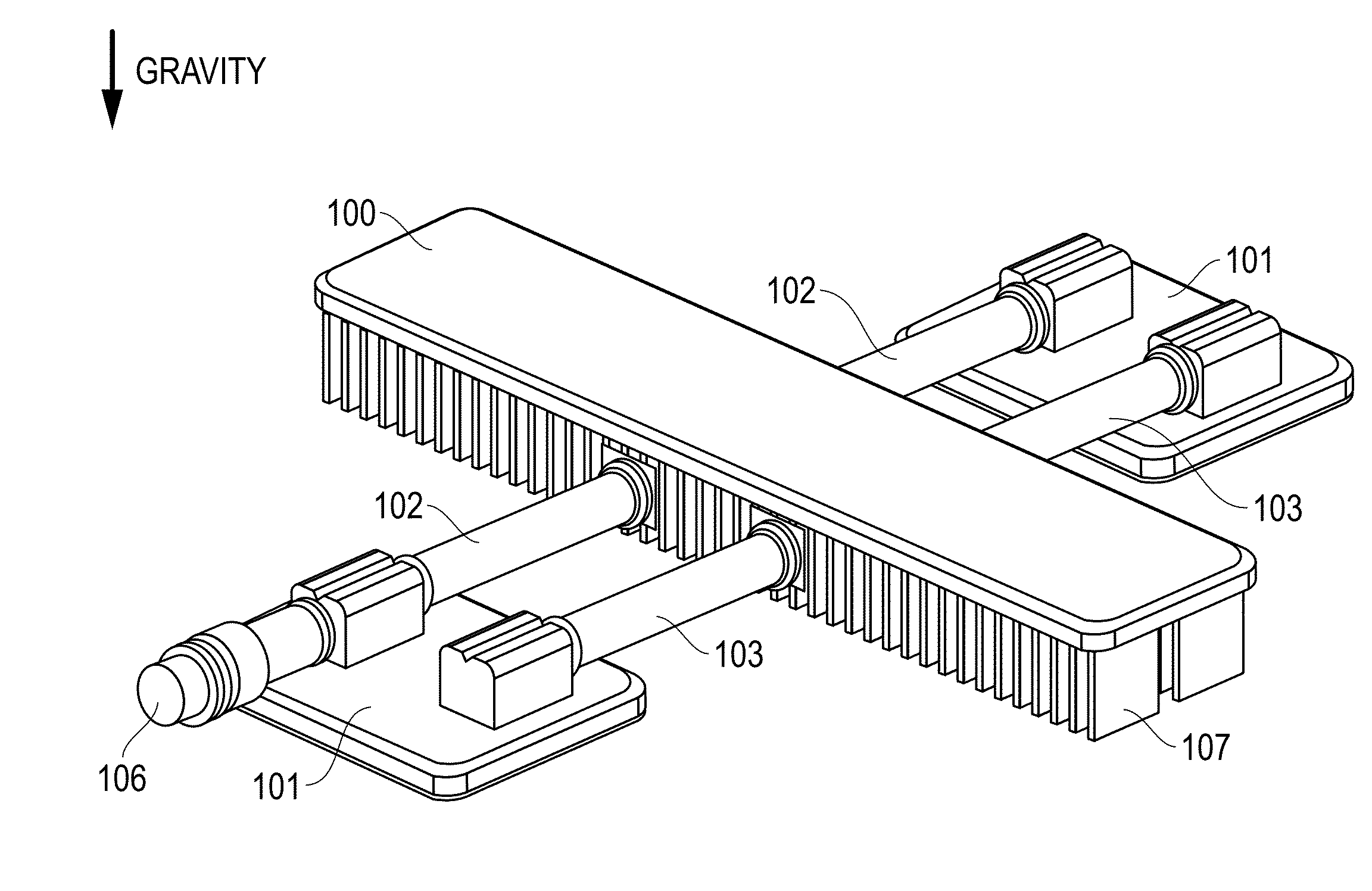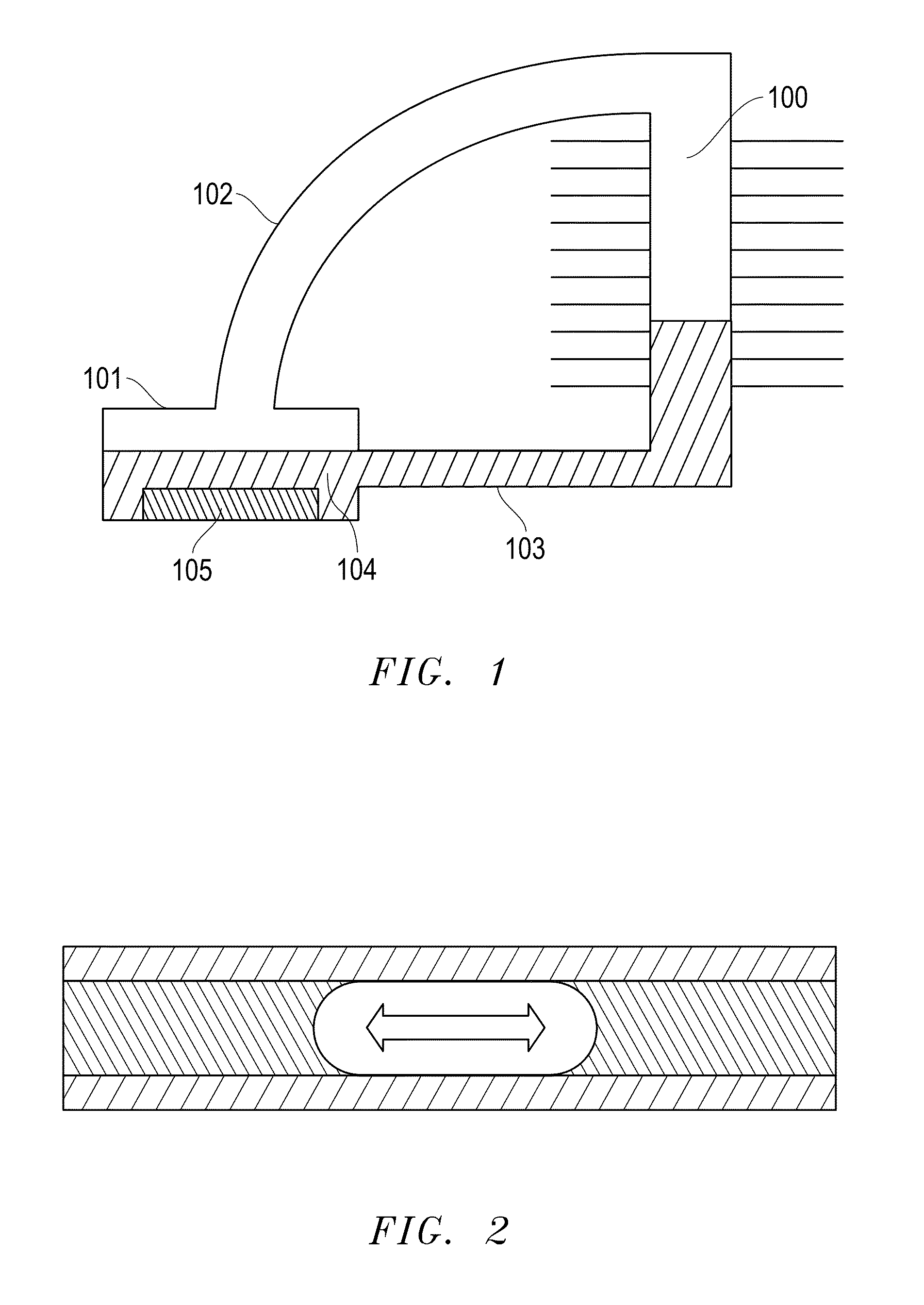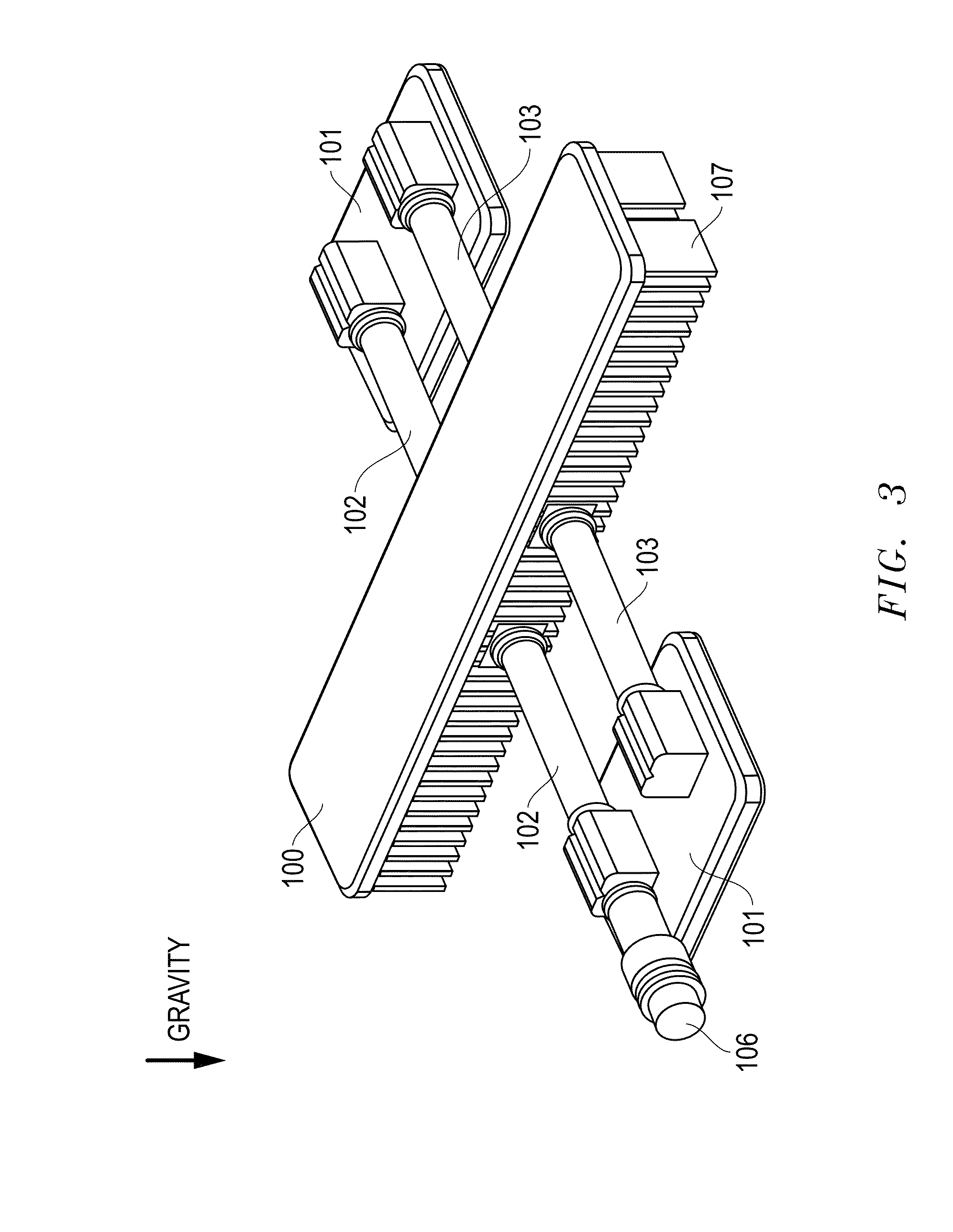Intermittent Thermosyphon
a thermosyphon and intermittent technology, applied in indirect heat exchangers, lighting and heating apparatuses, laminated elements, etc., can solve the problems of limited maximum boiling heat transfer coefficient, high pressure loss, and limited maximum heat transport distance and/or power
- Summary
- Abstract
- Description
- Claims
- Application Information
AI Technical Summary
Benefits of technology
Problems solved by technology
Method used
Image
Examples
Embodiment Construction
[0029]The present invention is directed to an improved intermittent thermosyphon. The configuration and use of the presently preferred embodiments are discussed in detail below. It should be appreciated, however, that the present invention provides many applicable inventive concepts that can be embodied in a wide variety of contexts other than an intermittent thermosyphon. Accordingly, the specific embodiments discussed are merely illustrative of specific ways to make and use the invention, and do not limit the scope of the invention. In addition, the following terms shall have the associated meaning when used herein:
[0030]One embodiment of the present invention is presented in FIG. 3. It includes a condenser 100, two evaporators 101, a vapor tube 102 connecting the evaporator 101 to the condenser 100 primarily transferring vapor, a liquid tube 103 connecting the condenser 100 to the evaporator 102 primarily transferring liquid, and an access valve 106, to pull a vacuum, charge and ...
PUM
 Login to View More
Login to View More Abstract
Description
Claims
Application Information
 Login to View More
Login to View More - R&D
- Intellectual Property
- Life Sciences
- Materials
- Tech Scout
- Unparalleled Data Quality
- Higher Quality Content
- 60% Fewer Hallucinations
Browse by: Latest US Patents, China's latest patents, Technical Efficacy Thesaurus, Application Domain, Technology Topic, Popular Technical Reports.
© 2025 PatSnap. All rights reserved.Legal|Privacy policy|Modern Slavery Act Transparency Statement|Sitemap|About US| Contact US: help@patsnap.com



